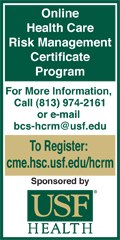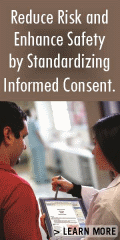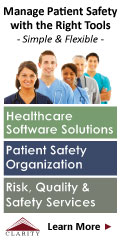 |
 |
 |

May / June 2007

Technology and Quality
Patient Flow:
A Powerful Tool That Transforms Care
Barry P. Chaiken, MD, MPH, FHIMSS
Most of us have lived through the Disney experience. To spend a day in a Disney theme park is truly a lesson in optimizing people flow. From the moment visitors arrive at the parking lot to when they return to their rental cars, they are sequentially guided from place to place in a magical orchestration of guides, trams, ticket takers, ride operators, cartoon characters, and food servers. Except for the popular rides that become overcrowded very early in the day, the movement from attraction to attraction goes smoothly, often led by park guides who calmly project their personal confidence in the processes. For anyone who has viewed these theme parks from the air, what feels so large on the ground, due to this efficient people flow, is in reality very small when seen from above.
Disney theme parks succeed at theme park visitor flow. Through research, experimentation, and experience over the years, the organization has in place processes that optimize the movement of visitors through its parks to maximize revenue from the existing investment in fixed infrastructure and deployed staff. If Disney applied its knowledge of visitor flow to patient flow, many hospitals would experience decreased waits in the emergency department, fewer cancelled elective surgeries, and shorter lengths of stay.
Leverage Existing Resources
By optimizing patient flow, hospitals leverage existing resources to deliver the highest level of care to the largest number of patients at the lowest cost. It works to improve the chain of processes, and handoffs between processes, to move patients from the emergency room to inpatient settings, and finally to discharge. Successful patient flow design requires inclusion of the entire chain of processes recognizing that each process links and affects every other.
Emergency department waits and ambulance diversions continue to plague hospitals. A 2003 General Accounting Office study noted the relationship between emergency department overcrowding and the inability to admit patients due to lack of free beds. In addition, patients often remained hospitalized due to lack of a facility for discharge. This inability to discharge, through a series of upstream interdependent processes, led to overcrowded emergency departments.
Remove Variability
Optimizing patient flow requires removal of variability. Although random variability (e.g., the number of patients that enter the emergency department on a given day at a given time) cannot be eliminated and only anticipated, non-random variability (e.g., scheduling patients for surgery) can be removed to achieve optimum patient flow.
Hospital staffing departments often use averages to determine staffing and resource availability, yet these measures do not adequately account for the variability in the demand for services that is part of any normal hospital day.
For example, if an operating theater can handle four average operations per day, and there are 10 theaters, on average, a hospital can handle 40 cases per day or 280 cases per week. If most surgeons schedule their cases on Mondays and Wednesdays and no cases on weekends, the hospital will not maximize its investment in the operating theaters (i.e., theaters remain idle on weekends), and the surgeons experience limited availability of the operating theaters on Mondays and Wednesdays.
If the hospital required the surgeons to utilize all days of the week for elective surgery while reserving theater time for urgent cases, the hospital would experience a higher level of utilization of operating theaters and fewer elective surgery cancellations due to unscheduled urgent cases.
By removing the non-random variability (i.e., the heavy schedule of surgeries on Monday and Wednesday and the lighter schedule the rest of the week), the hospital is better able to manage the flow of patients through the surgical suite and, in turn, the hospital.
It is easy to imagine the disruption and inefficiencies, including the upstream and downstream effects, generated by the sudden cancellation of scheduled surgeries to accommodate urgent operations. Negative effects include unavailability of beds for emergency department patients due to delayed service transfers or discharges, extended lengths of stay for patients "bumped" from the surgery schedule, over-demand for critical care beds, increased morbidity due to delayed care, and higher costs overall.
Take the Comprehensive View
Taking a comprehensive, overarching view of the delivery of care provides the basis for maximizing patient flow. Each process from admission to the emergency department, transfer to an inpatient unit, transfer between inpatient units, and discharge to another facility or home, must be efficient, and take into account the processes that lead up to the activity as well as the processes that follow the activity. By making each process internally efficient, while considering its impact on the preceding and following process, delivers a chain of processes that maximize patient flow and the various benefits that accrue from it.
At a facility in Regina, Saskatchewan, Canada, experts in patient flow utilized Six Sigma process redesign principles to create current and future state value maps to document current processes and create new, more efficient processes. Through a clinical transformation approach based on proven principles of change management, these experts worked with hospital leadership and staff to dramatically improve patient flow, and various metrics linked to quality of care and cost.
The clinical transformation was first undertaken as part of a pilot project targeted at the internal medicine service. Multiple department process changes led to the difference between total bed days and expected bed days decreasing from 56% to 10%. Average lengths of stay declined from 14.3 days to 7.4 days. Readmission rates, measured to ensure that patients were not being discharged prematurely, remained unchanged at 2%. Current plans are to expand this approach to other clinical services throughout the hospital.
Much of the work conducted today on optimizing patient flow occurs through rigorous process mapping. Although RFID (radio frequency identification) tags are being introduced into hospitals to track the utilization (and location) of medical devices such as portable X-ray machines and intravenous infusion pumps, little is being done to utilize the tracking data.
In the near future, algorithms built into monitoring software will analyze tracking data to intelligently direct the flow of medical equipment throughout a hospital. In addition, these systems, employing some level of artificial intelligence, will learn from these process flows and self-improve the algorithms used.
If patients and staff are monitored in a similar fashion, it is only a matter of time when such artificial intelligence is able to automatically describe in detail best processes for optimizing patient flow. It will then be up to clinical transformation teams to implement the necessary process changes to deliver higher quality, safer, and more efficient patient care.
Barry Chaiken has more than 20 years of experience in medical research, epidemiology, clinical information technology, and patient safety. As founder of his own company, he has worked on quality improvement studies and clinical investigations for the National Institutes of Health, Framingham Heart Study, and Boston University Medical School. Chaiken is board certified in general preventive medicine and public health and is a Fellow and Board Member of HIMSS. He is the associate chief medical officer of BearingPoint, Inc., adjunct assistant professor in the Department of Public Health and Family Medicine at Tufts University School of Medicine, and serves on the Editorial Advisory Board for Patient Safety and Quality Healthcare. He may be contacted at bchaiken@docsnetwork.com.
References
Internal documents, Clinical Transformation Practice, Public Services, BearingPoint, Inc.
Institute for Healthcare Improvement. (2003). Optimizing patient flow: Moving patients smoothly through acute care settings. Available at http://www.ihi.org/IHI/Results/WhitePapers.htm
|
 |
 |
 |


















|
 |



